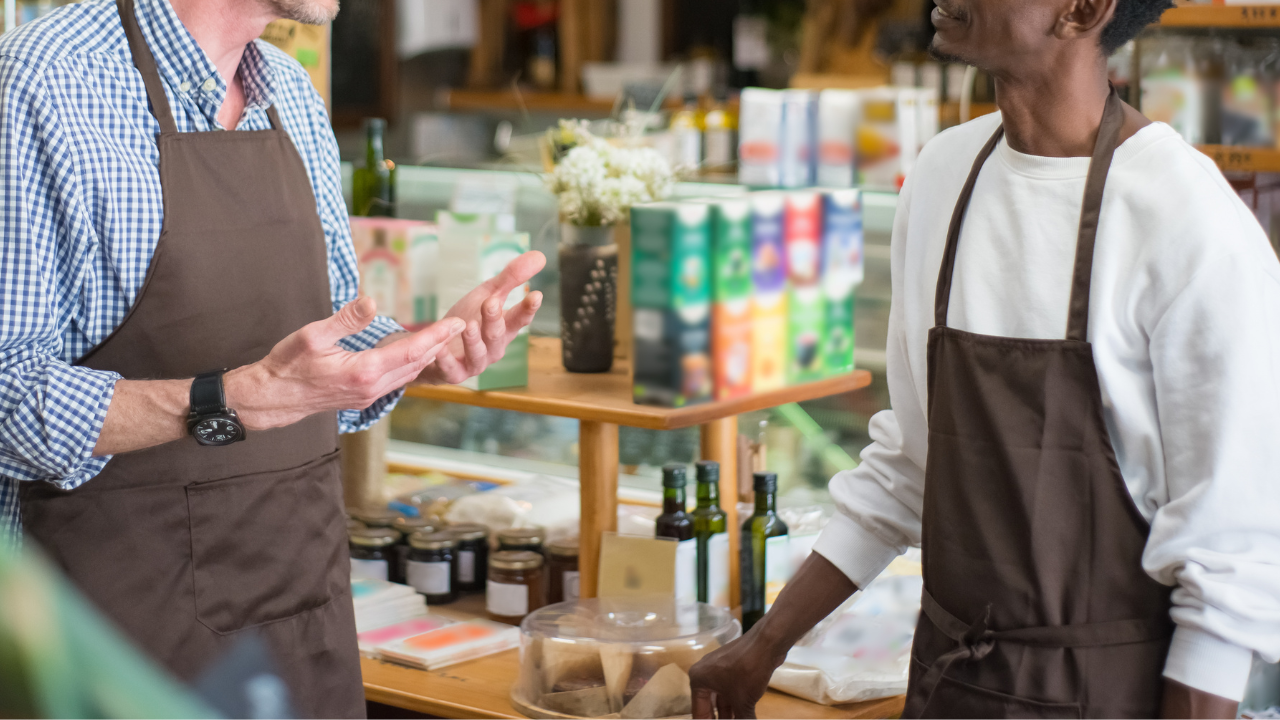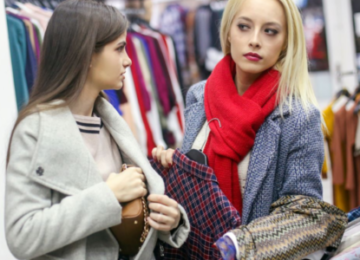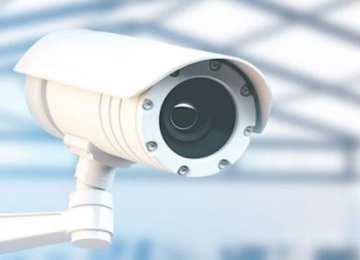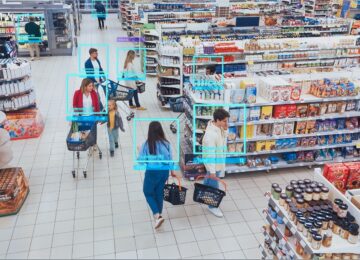Human insight: unlocking the potential of intelligent video surveillance

In 2022, as the NCIL (National Commission for Informatics and Liberties) was considering the regulations to be implemented around intelligent video surveillance, a study by Perifem, the Technical Federation of Commerce bringing together all the players in distribution and their suppliers, already highlighted the expectations of the French regarding video surveillance. In the same year, the Ministry of the Interior announced a 14% increase in thefts in supermarkets and small shops, with an equivalent unknown loss representing 2% of the average turnover.
“Store managers we speak with on the phone tell us that Veesion provides them with great assistance because security management is not their initial profession. They would do without it, unfortunately theft has become a significant societal issue, so they have to deal with it.”
- Annaëlle Kadouche, Customer Success Manager at Veesion
Today, most small, medium, and large retail stores are equipped with video surveillance. However, what is video surveillance worth without human intervention? Convinced of the central role of store teams in video surveillance, whether intelligent or not, Veesion interviewed store managers to give you the keys to improve surveillance effectiveness through human intervention.
“Experience has shown me that humans, whether they are cashiers or shelf stockers, are always essential in effectively managing a store.”
- Yannick, Manager of a Carrefour City
Putting humans at the heart of your video surveillance strategy
Video surveillance alone is useless; there must be people watching it, but no store has someone constantly monitoring screens. Therefore, it is necessary to implement a video surveillance strategy in which humans play a significant role. Humans include business leaders, security agents, and cashiers. Everyone has a role to play.
“Veesion relies on humans to function. The solution identifies gestures, but it is only through the involvement of supermarket managers and their teams that it makes a real difference in terms of unknown loss prevention.”
- Annaëlle Kadouche, Customer Success Manager at Veesion
Rethinking the role of security agents
In a store with a security agent, they are a key element of the surveillance strategy. While employees must be vigilant and may report suspicious behavior, it is the security agent who will be responsible for apprehending the suspected thief after reviewing the surveillance camera footage, or even conducting the review themselves.
In stores equipped with an intelligent video surveillance system, the security agent is also a privileged interlocutor. They provide field feedback and help refine the solution, which benefits them the most. Veesion is a tool for security agents and security managers, allowing them to be more confident on a daily basis. For those interested in the number of apprehensions, this solution is also a source of motivation.
“The security agent or Security Manager is a key interlocutor for the smooth operation of Veesion in large food stores. Their field feedback is valuable and allows us to provide qualitative feedback to managers.”
- Annaëlle Kadouche, Customer Success Manager at Veesion
Security agents also play a complementary role to AI. While intelligent video surveillance can process and analyze massive amounts of data very quickly, it may lack human judgment in certain situations. Security agents can interpret the data provided by AI, taking into account the context, which is essential to avoid false positives and understand the nuances of human behavior.
“With Veesion, we went from 25 or 30 cases per month to over 60.”
- Ousmane, Security Manager in a hypermarket
In addition to playing a key role in stopping ongoing thefts, they are probably the most deterrent component of your security system.
“Some security agents are afraid that AI will replace them, but this fear is unfounded. Most of them are instead very happy to have it, especially those who are alone in their store. They no longer have to run between watching cameras on the video PC, supporting checkout teams, and making rounds in the store.”
Annaëlle Kadouche, Customer Success Manager at Veesion
Managing video surveillance without security agents
Unfortunately, a security agent is a luxury that not all stores can afford. So here's how to avoid the pitfalls of video surveillance and ensure that this system improves your security rather than burdening it.
Pitfalls to avoid when managing video surveillance without security agents
- Referring to videos too often - Cameras are an aid; they should save you time. If you check surveillance screens 3 times an hour, you lose time and potentially don't catch more customers. You and your employees need to establish routines so that video surveillance complements your own vigilance.
- Not involving your teams - A supermarket manager manages too many things on a daily basis to handle a video surveillance system alone. You need to find ways to actively involve your employees in the overall security system.
- Apprehending without evidence - In case of apprehension, habitual shoplifters now ask for evidence; otherwise, they leave and don't come back.
Identifying suspicious gestures and behaviors
“No one is trained to spot suspicious behaviors, but everyone more or less knows what they are.”
- Yannick, Manager of a Carrefour City
The first step in effective video surveillance management is to compile a list of suspicious gestures and behaviors. This list is important because, despite what some may think, what is considered suspicious behavior varies from person to person. This list will therefore serve as a guide for your teams. Not all employees have the same level of experience, and you cannot always brief newcomers on everything, so this step will save you time and increase efficiency for your employees.
“The risk with video surveillance is that any behavior can quickly become suspicious, and you end up spending your time watching screens to follow customers in the store.”
- Jean-Philippe, Manager of a Carrefour City
In this list, you should include both obvious suspicious gestures (placing an item in a bag or stroller, in a jacket or pocket...) and suspicious behaviors (hidden face, looking at cameras...). These are the gestures, and only those, that justify watching surveillance screens.
Why only those? Because your employees who are looking for less obvious gestures, weak signals, but do not have sufficient experience, may refer to screens too often and end up wasting a lot of time on their other tasks.
“Employees don't necessarily have the merchant's eye that I do. They don't always know how to keep a suspicious eye on regular and unsuspecting customers.”
- Nicolas, Tenant-Manager of a Carrefour and Veesion user
For other too discreet thefts, or those committed by people without obvious suspicious behavior, stores without an intelligent video surveillance system must use recordings whenever an inventory reveals a significant anomaly. Since surveillance camera images cannot be kept for more than a month without violating GDPR, it is necessary for these stores to conduct a comprehensive inventory every month at a minimum.
“Video surveillance imposes a significant routine to identify thefts. Inventories must occur more frequently, that's where managers observe a significant discrepancy between what should be in stock and what is actually there. Based on this observation, it is necessary to review the recordings of the relevant cameras to try to identify a thief, who may be apprehended during a subsequent visit. With Veesion, we save time on this whole process.”
- Annaëlle Kadouche, Customer Success Manager at Veesion
Employee involvement as a cornerstone of system effectiveness
The second step to ensure the effectiveness of your video surveillance system is to involve your employees. Each employee must feel that they have a role to play in the security of the store because the more vigilant your employees are, the less likely thieves can go unnoticed. The role of employees in the security system involves primarily simple things, such as establishing routines, or reminding them of what they are allowed to do in certain situations.
“A cashier has the right to ask a customer to open their bag once they have passed the checkout line and are about to leave without paying. Most cashiers know this; it just takes time to remind them to instill confidence.”
- Annaëlle Kadouche, Customer Success Manager at Veesion
To go further, empowering them on this subject is one of the best practices to adopt to ensure this. For example, you can assign specific roles to certain employees to monitor the surveillance cameras in shifts so that they feel responsible and valued in this role.
You can also set up a communication channel on security topics, on WhatsApp or Telegram for example, or even organize monthly meetings to discuss security issues, trends observed in surveillance video recordings, and potential improvements.
This involvement is crucial, even when using an intelligent video surveillance system.
“There are 6 of us managing video surveillance. Managers handle alerts when they are on duty, but some leave the channel active and can react even when off duty if they see an alert. In this case, they immediately inform the person on site by calling them, explaining the alert, and describing the suspect. Sometimes we handle them in duplicate, often through a text message, and through a call within 2 minutes if there is no response.”
- Nicolas, Tenant-Manager of a Carrefour and Veesion user
Achieving such a level of involvement is not easy. It is naturally facilitated by good relations between employees, managers, and the director(s), and can be encouraged by a bonus system linked to the level of unknown loss.
“Veesion also aims to succeed in involving teams. It is not the primary role of a cashier to ask a customer to open their bag or to apprehend someone, so techniques need to be provided to them. Asking to check bags systematically, for example, helps avoid a customer feeling discriminated against and thus avoids putting the cashier in a conflict situation. If necessary, we intervene to explain this again.”
- Annaëlle Kadouche, Customer Success Manager at Veesion
Proper reactions to theft
“The person who notices suspicious behavior, whether it's me or members of my staff, tries to keep an eye on them, directly or via surveillance cameras. If in doubt, we ask them to open their bags just in case.”
- Yannick, Manager of a Carrefour City
When there is a suspicion of theft in a store, employees must follow specific procedures to manage the situation legally and safely. Here are the 3 main steps to follow:
- Observation : Employees must discreetly observe suspicious behavior, directly or by consulting the surveillance camera recordings. It is crucial not to accuse the person directly without concrete evidence.
- Inspection : In France, store employees are not authorized to perform body searches. They can ask the suspect to show the contents of their bag at the checkout, but this approach must be done respectfully and non-coercively. If theft is confirmed, you can call the police; however, employees should not attempt to detain the suspect by force.
- Incident report : Documenting the incident in detail is essential. This report can be used by the police and for internal store needs.
Reminder of the rules in case of shoplifting
| You can… | You cannot… |
| Ask the person to empty their pockets and show the inside of their bag. Ask the thief to return the merchandise or pay its value. Keep the person in your store until the police arrive. | Apprehend a person until they have passed the checkout counters. Insult or threaten a perpetrator. Present yourself armed to a potential thief. Ask for a higher price for the purchase of stolen merchandise as compensation. Search the person without their consent. |
Read the article "Proving a Shoplifting Charge: What Should the Retailer Do?" to learn more
Note - During the inspection phase, it is preferable to have a clear recording of the theft. The thief has the right to refuse to open their bag or empty their pockets; if they realize you have no evidence, they can exercise this right and leave the store.
The time between detecting the theft and apprehension is a key element in the ability to stop thieves. Often, by the time surveillance camera footage is reviewed, the thief has already left the store. Even if a thief often repeats their actions and you could catch them during their next visit, you still need a recording with a sufficiently identifiable face and/or a good memory of faces.
“The camera confirmed the theft, but it was because I was attentive and had memorized their face that this person could be apprehended.”
- Christopher, Manager of Carrefour Contact
The best responsiveness is provided by humans who see the theft and can act directly, but neither you nor your teams can see everything. Artificial Intelligence fills this gap, reducing the intervention time enough to stop most thieves.
“The person on site handles all alerts, but sometimes they handle them with a delay of 30 seconds, or more if they are busy. That's why I also handle them in parallel.”
- Nicolas, Tenant-Manager of a Carrefour and Veesion user
The most popular
Related news
Discover what Veesion can do for you. Do you have one or more stores?
Our team will contact you within 48 hours





